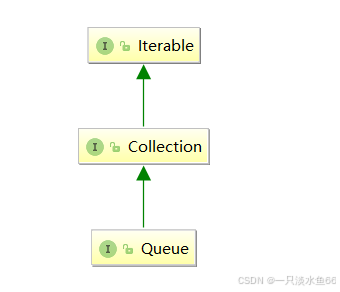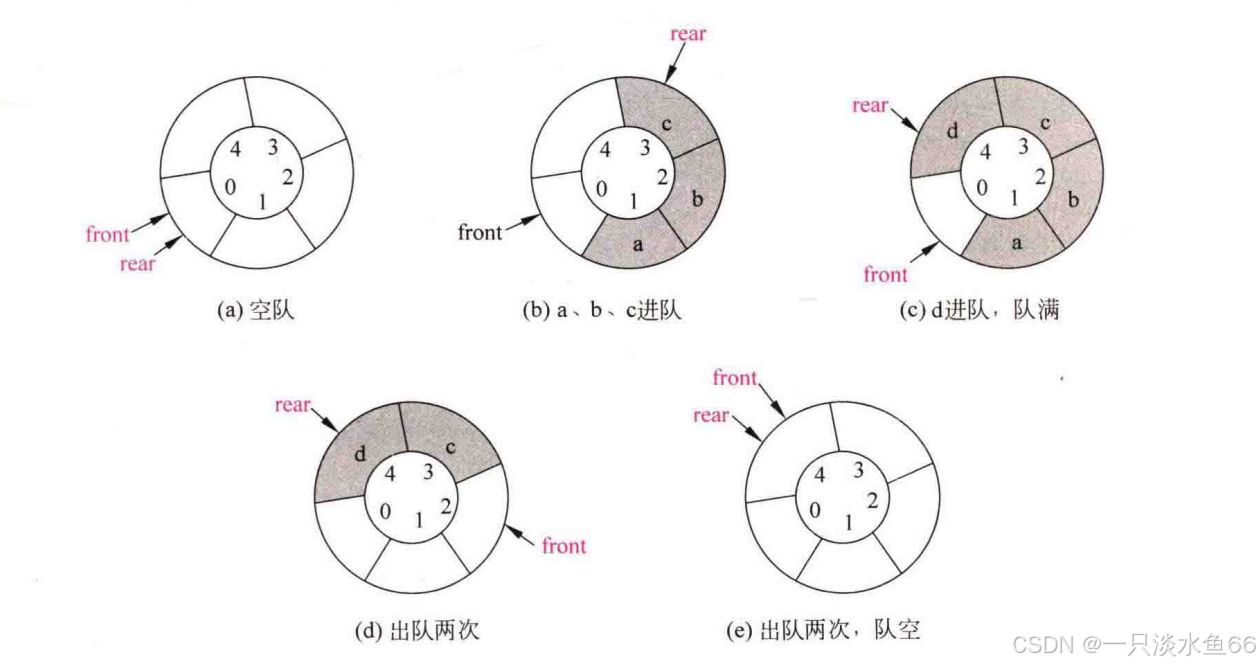栈(Stack)
简单描述
栈:一种特殊的线性表,其只允许在固定的一端进行插入和删除元素操作。进行数据插入和删除操作的一端称为栈顶,另一端称为栈底。栈中的数据元素遵守后进先出LIFO(Last In First Out)的原则。
压栈:栈的插入操作叫做进栈/压栈/入栈,入数据在栈顶。
出栈:栈的删除操作叫做出栈。出数据在栈顶。

使用栈的一些常见的方法
压栈、出栈、获取栈顶元素、获取栈中元素个数、检查栈是否为空
public class Main { public static void main(String[] args) { Stack<Integer> stack = new Stack<>(); stack.push(1);//压栈 stack.push(2); stack.push(3); stack.peek();//获取栈顶元素 stack.pop();//删除栈顶元素 stack.size();//获取栈中元素的个数 stack.empty();//判断栈是否为空 } }使用数组模拟实现栈
public class MyStack { private int[] elem; private int usedSize; private static final int DEFAULT_CAPACITY = 10; public MyStack() { this.elem = new int[DEFAULT_CAPACITY]; } public MyStack(int capacity){ this.elem = new int[capacity]; } private boolean checkCapacity(){ if(this.usedSize == elem.length){ return true; } return false; } public void push(int val){ if(this.checkCapacity()){ this.elem = Arrays.copyOf(this.elem,2*this.elem.length); } this.elem[this.usedSize] = val; this.usedSize++; } public int pop() throws EmptyException { if(this.usedSize == 0){ //throw new EmptyException("栈为空!"); return -1; } int tmp = this.elem[this.usedSize-1]; this.usedSize--; return tmp; } public int peek() throws EmptyException { if(this.usedSize == 0){ //throw new EmptyException("栈为空!"); return -1; } int tmp = this.elem[this.usedSize-1]; return tmp; } public int size(){ return this.usedSize; } public boolean empty(){ return this.usedSize == 0; } }我们使用 usedSize 来记录栈中元素的个数,压栈的时候就在 elem[usedSize] 输入元素,出栈的时候 usedSize 减一就可以了。
为什么用数组来实现栈? 因为用数组来实现栈的时间复杂度为 O(1) 比较高效。

从上图中可以看到,Stack继承了Vector,Vector和ArrayList类似,都是动态的顺序表,不同的是Vector是线程安全的 。
逆序输出链表
我们知道栈的一个特点是先进后出,那么先放进去的元素最后出栈。因此我们就可以达到一个目的:逆序
我们知道一个逆序的方法:递归
void printList(Node head){
if(null != head){
printList(head.next);
System.out.print(head.val + " ");
}
}
接下来我们利用栈来实现逆序:
void printList(Node head){
if(null == head){
return;
}
Stack<Node> s = new Stack<>();
// 将链表中的结点保存在栈中
Node cur = head;
while(null != cur){
s.push(cur);
cur = cur.next;
}// 将栈中的元素出栈
while(!s.empty()){
System.out.print(s.pop().val + " ");
}
}
队列(Queue)
简单描述
队列:只允许在一端进行插入数据操作,在另一端进行删除数据操作的特殊线性表,队列具有先进先出FIFO(FirstIn First Out) 入队列:进行插入操作的一端称为队尾(Tail/Rear) 出队列:进行删除操作的一端称为队头(Head/Front) 。

在Java中,Queue是个接口,底层是通过链表实现的。

队列(Queue)的一些常见方法
入队、出队、获取队头元素、获取队中元素个数、判断队列是否为空
public class Main { public static void main(String[] args) { Queue<Integer> queue = new LinkedList<>(); queue.offer(1);//入队 queue.offer(2); queue.offer(3); queue.poll();//删除队头元素 queue.peek();//获取队头元素 queue.size();//获取队中元素个数 queue.isEmpty();//判断队列是否为空 } }使用链式结构来模拟实现队列
我们模拟实现队列既可以用线性结构也可以用链式结构,接下来我们使用链式结构来模拟实现一个简单队列。
public class MyQueue { private int usedsize; static class ListNode{ private int val; private ListNode prev; private ListNode next; public ListNode(int val){ this.val = val; } } private ListNode front;//队头 private ListNode rear;//队尾 public void offer(int data){ ListNode node = new ListNode(data); if(front == null){ front = rear = node; }else{ node.next = front; front.prev = node; front = node; this.usedsize++; } } public int poll(){ if(front == null){ System.out.println("队列没有元素!"); return -1; } if(front == rear){ int b = this.rear.val; front = null; rear = null; this.usedsize--; return b; } int a = this.rear.val; this.rear.prev.next = null; this.usedsize--; return a; } public int peek(){ if(front == null){ System.out.println("队列没有元素!"); return -1; } if(front == rear){ int b = this.rear.val; return b; } int a = this.rear.val; return a; } public int size(){ return this.usedsize; } public boolean isEmpty(){ return this.usedsize == 0; } }这里我们 offer 入队操作采用的是链表中的头插法,我们使用双向链表的操作使得我们可以保存尾节点的位置,利于我们可以直接进行删除操作。
循环队列
上面我们提到还可以使用线性结构来实现队列。但是这时就有一个问题了,我们使用数组来达到队列的效果,在进行删除操作的时候,尾节点慢慢向前,会造成假溢出的现象。这时我们就要引入循环队列的概念。

此时我们在进行入队和出队操作的时候就不能单纯的使用 front++ 和 rear++ 不然我们达不到循环的效果。我们应该使用 (front+1)%elem.length 和 (rear+1)%elem.length 来控制头节点和尾节点的移动。
判断队空和队满
三种方法:
- 1. 通过添加 size 属性记录
- 2. 保留一个位置
- 3. 使用标记
1.我们从一开始就定义一个 size 来记录队列中元素的个数,当 size == 0 的时候队空 ,当 size == elem.length 的时候队满。
2.我们保留一个位置不放元素,当 front == rear 的时候队空,当 ((rear+1)%elem.length+1)elem.length == front 的时候队满。
3.我们使用一个 flag 来充当标记,开始的时候 front == rear 这时 flag = 0 队为空,当再次遇到 front == rear 的时候将 flag = 1 这时队满。
双端队列
双端队列(deque)是指允许两端都可以进行入队和出队操作的队列,deque 是 “double ended queue” 的简称。那就说明元素可以从队头出队和入队,也可以从队尾出队和入队。

Deque是一个接口,使用时必须创建LinkedList的对象。

由于该队列的特点:元素可以从队头出队和入队,也可以从队尾出队和入队。因此双端队列既可以充当栈来使用也可以充当普通队列来使用。

 在实际工程中,使用Deque接口是比较多的,栈和队列均可以使用该接口。
在实际工程中,使用Deque接口是比较多的,栈和队列均可以使用该接口。
